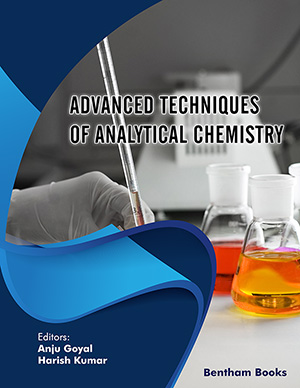[1]
Kondawar, M.S; Kamble, K.G; Mali, D.S Quantitative estimation of gallic acid and ascorbic acid in a marketed herbal medicine triphala churna by high-performance thin layer chromatography. Int. J. Pharm Tech Res., 2011, 3(3), 1593-1599.
[2]
Rajasekaran, A HPTLC method for estimation of gallic acid and rutin in haritaki -an ayurvedic formulation. Int. J. Pharm Tech Res., 2011, 3(2), 986-999.
[3]
Vishal, Jain; Ambar, Vyas TLC densitometric methods for quantification of gallic acid in triphala churna for routine quality control. Res. J. Pharma. Technol., 2011, 4(2)
[4]
Lakshman, K Tripathi: Estimation of rutin and quercetin Terminalia chebula by HPLC, The Internet. J. Aesthet. Antiag. Med., 2009, 2(1)
[5]
Anonymous The Indian Pharmacopoeia 1996, Part-II, Appendix-3, Govt. of India, Ministry of Health and Family Welfare. 1996, A-34
[6]
Quality Standards of Indian Medicinal Plants, Volume 1: Indian Council of Medical Research, ICMR, New Delhi, India, 2003, xvi + 262 pp., 32 Chapters and colour plates, 6 Appendices, 3 Indices, US\$ 40.00, hard cover. J. Ethnopharmacol., 2004, 90, 422.
[7]
Anurekha, J. Practicals in modern pharmaceutical instrumental analysis; Nirali Prakashan, 2007.
[8]
Robert, Nash Pharmaceutical process validation, an international third edition, revised & expanded., Marceldekker, INC., 1993.
[9]
Ayurvedic Formulary of India. Central Council for Research for Ayurveda and Siddha, 2nd Ed., Part 1, Ministry of Health and Family Welfare, Government of India, 2003.
[11]
Rupali, J.; Pawar, N.S.; Katiyar, S.S.; Zope, D.B.; Shinde, A.T. Development and validation of UV spectrophotometric methods for simultaneous estimation of paracetamol and ibuprofen in pure and tablet dosage form, pelagia research library. Pharm. Sin., 2011, 2(3), 164-171.
[12]
Reddy, N. A new spectrophotometric determination of famotidine from tablets. J. Pharm. Sci., 2006.
[13]
Sahu, R. Simultaneous spectrophotometric estimation of famotidine and domperidone, in combined tablet dosage form. Indian J. Pharm. Sci., 2006.
[14]
Agrawal, Y.K. Spectrophotometric determination of famotidine in pharmaceutical preparation. J. Pharmaceut. Biomed. Analy., 1992, 10(7), 521-523.
[15]
Pawar, N.P. Development and validation of UV spectrophotometric method for simultaneous estimation of rutin and gallic acid in the hydroalcoholic extract of Triphala churna. Int. J. Pharm. Tech. Res., 2013, 5, 724-729.
[16]
ICH-Q2A. Text on validation of analytical procedures. In: Harmonized tripartite guideline prepared within the international conference on harmonization of technical requirements for the registration of pharmaceuticals for human use; Geneva, 1994.
[17]
ICH-Q2B. Validation of analytical procedures: Methodology in Harmonized tripartite guideline prepared within the international conference on harmonization of technical requirements for the registration of pharmaceuticals for human use; Geneva, 1996.
[18]
Trease, G.E.; Evans, W.C. Pharmacognosy; WB Saunders, 2008, pp. 30-72.
[19]
Khandelwal, K.R. Practical pharmacognosy. In: Techniques and Experiments; Nirali Prakashan: Pune, 2005; pp. 25.1-25.7.
[21]
The Ayurvedic Pharmacopoeia of India.Government of India Ministry of Health and Family Welfare Department of Indian System of Medicine & Homoeopathy; New Delhi, 2001, 1, p. (47)143.
[22]
The Wealth of India. A Dictionary of Indian Raw Materials and Industrial Products, First Supplement series. National Institute of Science Communication and Information Resources; National Institute of Science Communication and Information Resources.CSIR: New Delhi; , 2004, 5, pp. 199-203.
[23]
Ankita Jain, A.K. High-performance thin layer chromatography (HPTLC): A modern analytical tool for chemical analysis. Curr. Res. Pharmaceut. Sci., 2014, 4(1), 8-14.
[24]
Mishra, A.K.; Gupta, A.; Gupta, V.; Sand, R.; Bansal, P. Asava and arista: An ayurvedic medicine - An overview. Int. J. Pharm. Biol. Arch., 2010, 1(1), 24-30.






















